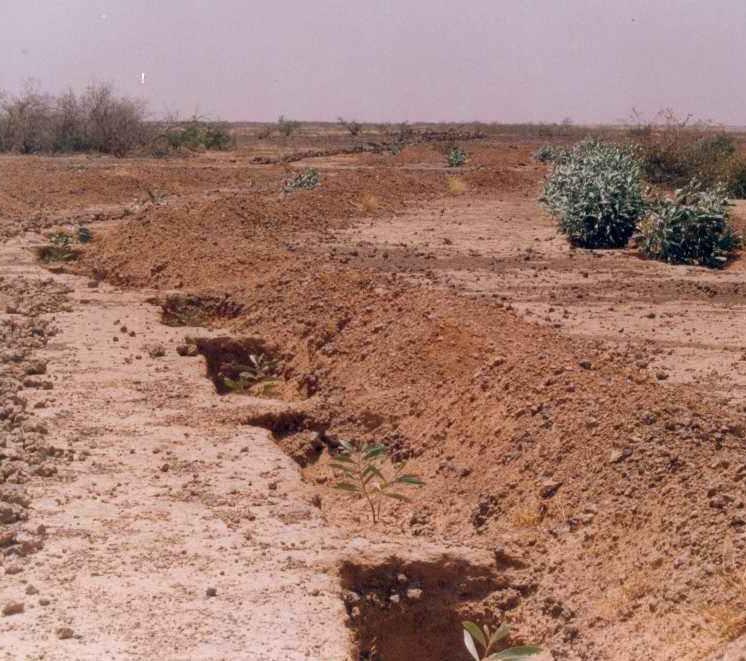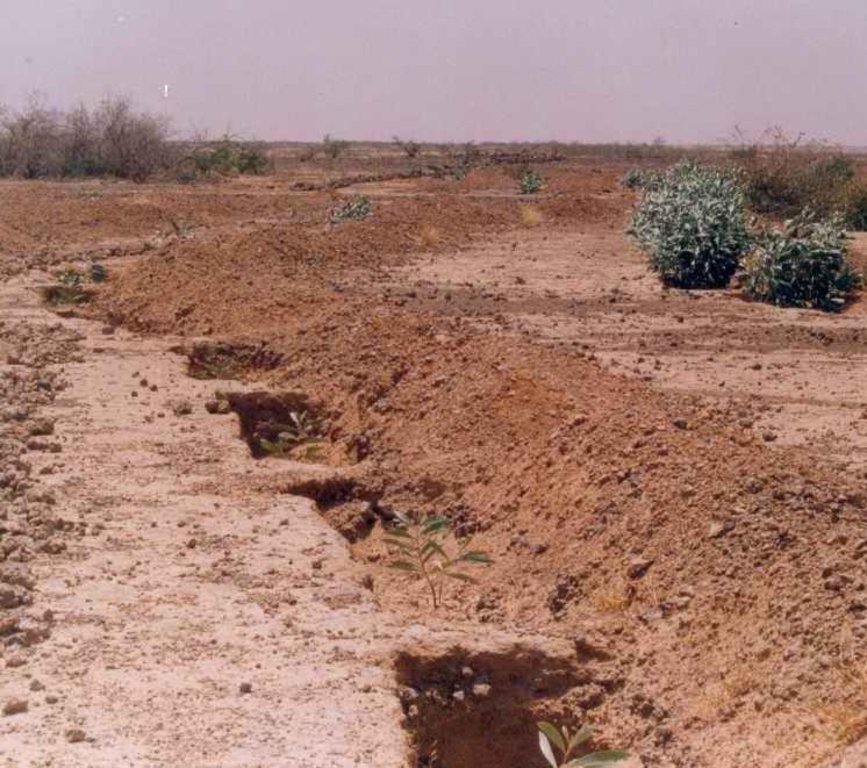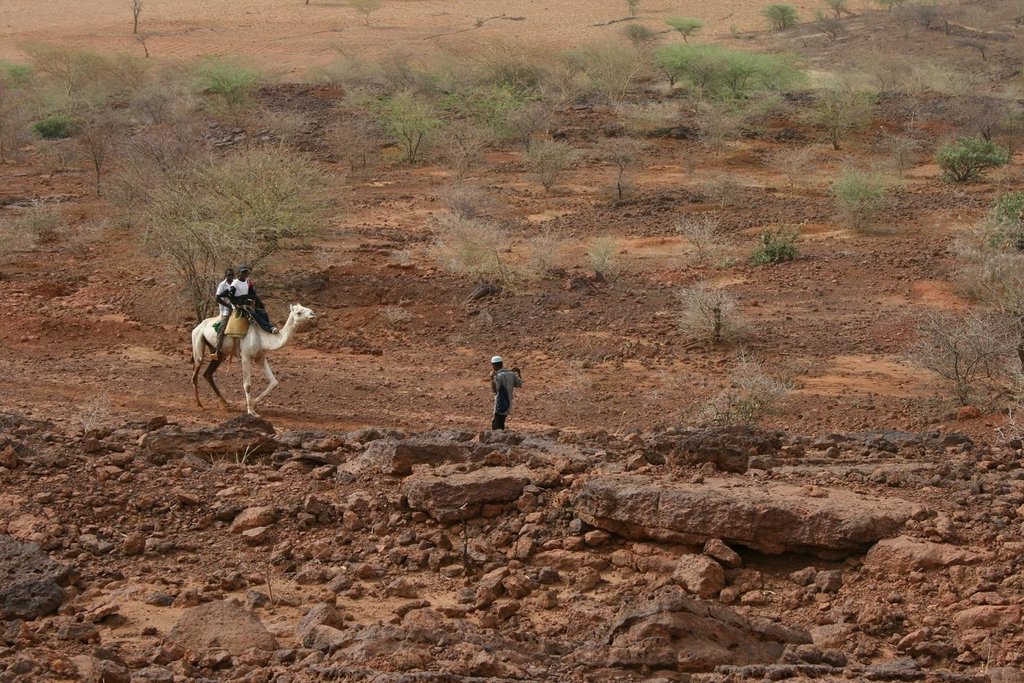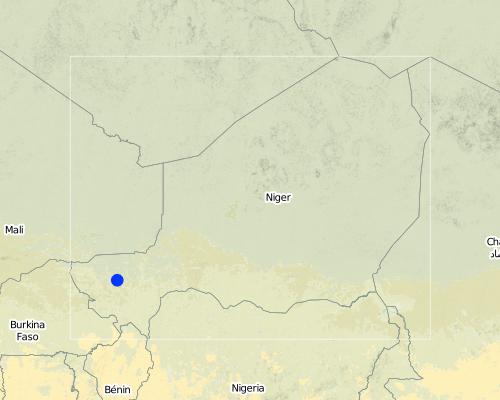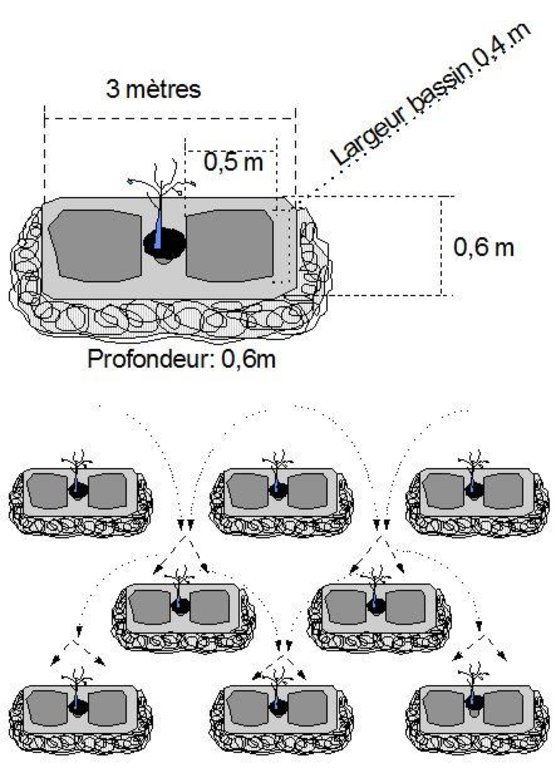Hand-dug trenches [Нигер]
- Шинийг нээх:
- Шинэчлэх:
- Эмхэтгэгч: Dieter Nill
- Хянан тохиолдуулагч: –
- Хянагч: David Streiff
Tranchées manuelles (French)
technologies_1625 - Нигер
Бүлгүүдийг үзэх
Бүгдийг дэлгэх Бүгдийг хаах1. Ерөнхий мэдээлэл
1.2 Технологийг үнэлэх, баримтжуулах ажилд хамаарах мэдээлэл өгсөн хүмүүс, байгууллагуудын холбоо барих мэдээлэл
ГТМ мэргэжилтэн:
Dorlöchter-Sulser Sabine
Misereor
Герман
ГТМ мэргэжилтэн:
Mamadou Abdou Gaoh Sani
mamadou.sani@giz.de
Programme d’Appui à l’agriculture Productive (PROMAP)
Niamey
Нигер
Технологи баримтжуулах/үнэлэх ажилд дэмжлэг үзүүлсэн төслийн нэр (шаардлагатай бол)
Programme d’Appui à l’agriculture Productive (GIZ / PROMAP)Технологи баримтжуулах/үнэлэх ажилд дэмжлэг үзүүлсэн байгууллага(ууд)-ын нэр (шаардлагатай бол)
Deutsche Gesellschaft für Internationale Zusammenarbeit (GIZ) GmbH (GIZ) - ГерманТехнологи баримтжуулах/үнэлэх ажилд дэмжлэг үзүүлсэн байгууллага(ууд)-ын нэр (шаардлагатай бол)
Misereor - Герман1.3 ВОКАТ-аар баримтжуулсан өгөгдлийг ашиглахтай холбоотой нөхцөл
Мэдээллийг хэзээ (газар дээр нь) цуглуулсан бэ?
01/07/2012
Эмхэтгэгч болон гол мэдээлэгч хүн(хүмүүс) WOCAT аргачлалаар баримтжуулсан мэдээллийг ашиглахтай холбоотой нөхцлийг хүлээн зөвшөөрсөн:
Тийм
2. ГТМ Технологийн тодорхойлолт
2.1 Технологийн товч тодорхойлолт
Технологийн тодорхойлолт:
Hand-dug trenches contribute to the restoration of tree cover and prevention of water erosion on slopes.
2.2 Технологийн дэлгэрэнгүй тодорхойлолт
Тодорхойлолт:
This technique is designed to restore communal land on slopes and highland pediments. It involves manually excavating trenches 3 to 3.5 m long and 0.6 m deep, spaced 4 m apart in staggered rows. This results in around 625 trenches per hectare. The excavated earth is piled downhill of the trenches, which are aligned perpendicular to the slope. In the middle of each trench, a 0.40 m high step is left on which the tree seedling is planted. The tree receives the water it needs from the trench where it collects.
Purpose of the Technology: The main purpose of this technique is to restore tree cover on degraded, unfertile land and prevent water erosion on slopes by reducing the flow of water that threatens land downstream. The trenches reduce gully erosion and pedimentation of areas with a fragile soil structure. Like all afforestation measures, in the medium term, this technique is effective in protecting the land against water and wind erosion. The shade provided by the trees also lowers the temperature of the soil and the infiltration of water in the hand-dug trenches contributes to groundwater recharge.
Areas restored using hand-dug trenches can subsequently be exploited to a limited extent in accordance with strict controls.
Establishment / maintenance activities and inputs: The technique is very labour intensive. Work must begin immediately after harvesting when the soil is still moist and workable. A protection and monitoring system is required to ensure that grazing animals do not damage the young trees. The mortality of trees after planting is relatively high (survival rate is about 60%), and dead trees must be replaced systematically during the first three years. Good community organisation is required.
Natural / human environment: Hand-dug trenches are particularly useful when rainfall is low, as they retain water and make it available to the trees growing in them. In years when rainfall is abundant or there are violent downpours, the young trees are protected, as they are planted on a raised step within the trench, although there is a risk of flooding in the event of very heavy rain.
2.3 Технологийн гэрэл зураг
2.5 Энэ үнэлгээнд хамрагдсан технологийг хэрэгжүүлсэн улс орон/ бүс нутаг/ байршил
Улс:
Нигер
Улс/аймаг/сум:
Niger
Байршлын дэлгэрэнгүй тодорхойлолт:
Regions of Tillabéri, Filingué, Ouallam, Téra and Tahuoa
Map
×2.6 Хэрэгжсэн хугацаа
Байгуулсан тодорхой оныг мэдэхгүй бол баримжаа хугацааг тодорхойл:
- 10-50 жилийн өмнө
2.7 Технологийн танилцуулга
Технологийг хэрхэн нэвтрүүлснийг тодорхойл:
- Гадны төсөл/хөтөлбөрийн дэмжлэгтэйгээр
Тайлбар (төслийн төрөл г.м.):
Developed, implemented and disseminated as part of projects and programmes undertaken from the 1980s onwards to combat desertification and improve natural resource management. Implemented by German Development Cooperation (BMZ, GIZ, KfW) in Niger by projects e.g. PDRT (Projet de développement rural de Tahoua - Tahoua Rural Development Project)
3. ГТМ технологийн ангилал
3.1 Технологийн үндсэн зорилго (ууд)
- газрын доройтлыг бууруулах, сэргийлэх, нөхөн сэргээх
3.2 Технологи нэвтрүүлсэн газрын одоогийн газар ашиглалтын хэлбэр(үүд)

Тариалангийн талбай
- Нэг наст үр тариа
- Мод, сөөг тарих
Гол нэрийн үр тариа (арилжааны болон хүнсний таримал):
major cash crop: Ground nut
major food crop: Millet
other: Sorghum, cow peas and mangoes

Холимог (тариалан/бэлчээр/мод), үүнд. ХАА-н ойжуулалт
- Агро-пасторализм
Тайлбар:
Major land use problems (compiler’s opinion): water erosion (gully, sheet), wind erosion, degraded and infertile land
Nomadism: Yes
Semi-nomadism / pastoralism: Yes
Cut-and-carry/ zero grazing: Yes
Improved pasture: Yes
Mixed: (eg agro-pastoralism, silvo-pastoralism): Yes
Other grazingland: agropastoralism
Selective felling of (semi-) natural forests: Yes
Forest products and services: timber, fuelwood, fruits and nuts, grazing / browsing, other forest products / uses (honey, medical, etc.)
Type of cropping system and major crops comments: armers are mainly agropastoralists with some communities specialised on pure pastoralism
Constraints of common grazing land
Constraints of forested government-owned land or commons
3.3 Газар ашиглалтын тухай нэмэлт мэдээлэл
Технологи хэрэгжүүлсэн газрын усан хангамж:
- Байгалийн усалгаатай
Тайлбар:
Water supply: Also mixed rainfed - irrigated and post-flooding
Жилд ургамал ургах улирлын тоо:
- 1
Тодорхойлно уу:
Longest growing period in days: 120; Longest growing period from month to month: August to October
Малын нягт (шаардлагатай бол):
1-10 LU /km2
3.4 Технологи ГТМ-ийн аль бүлэгт хамаарах вэ
- хөрс/ ургамлын бүрхэвч сайжруулах
- Усжуулалтын менежмент (усан хангамж, ус зайлуулалт зэрэг.)
3.5 Технологийн хамрах талбай
Технологи өргөн дэлгэрсэн эсхийг тодорхойл:
- газар дээр жигд тархсан
3.6 Технологийг бүрдүүлэх ГТМ арга хэмжээ

Ургамлын арга хэмжээ
- V1: Мод ба бут, сөөг

Барилга байгууламжийн арга хэмжээ
- S3: Шаталсан суваг, шуудуу, голдирол
3.7 Технологид харгалзах газрын доройтлын төрөл

хөрс усаар эвдрэх
- Wt: Хөрсний гадаргын угаагдал
- Wg: Гуу жалгын элэгдэл
- Wo: Усны элэгдлийн дам нөлөө

хөрс салхиар эвдрэх
- Et: Хөрсний гадаргын зөөгдөл

хөрсний химийн доройтол
- Cn: Үржил шим ба ялзмаг буурах (элэгдлийн шалтгаангүй)

биологийн доройтол
- Bc: Ургамлан нөмрөг багасах

усны доройтол
- Ha: Хуурайшилт
- Hg: Гүний ус / уст үеийн усны түвшин өөрчлөгдөх
Тайлбар:
Secondary types of degradation addressed: Et: loss of topsoil, Hg: change in groundwater / aquifer level
Main causes of degradation: soil management (Unadapted land use methods, reduced or abandoned fallow periods), crop management (annual, perennial, tree/shrub) (Neglect of fallow periods and crop rotation), droughts (due to heat waves), population pressure (rapidly growing population increasing pressure on land), land tenure (insecure access to land and collectively managed communal land), poverty / wealth (very poor population)
Secondary causes of degradation: deforestation / removal of natural vegetation (incl. forest fires) (deforestation through overgrazing and fire wood collection), over-exploitation of vegetation for domestic use (firewood collection), overgrazing (cattle, sheep and goats), change in temperature (Climate change: heat waves), change of seasonal rainfall (more variable onset of rains), Heavy / extreme rainfall (intensity/amounts) (more variable and intensive rains), wind storms / dust storms (frequent storms), floods (due to intensive rain storms), labour availability (some migration of men to nearby cities), education, access to knowledge and support services (high level of illiteracy)
3.8 Газрын доройтлоос урьдчилан сэргийлэх, сааруулах ба нөхөн сэргээх
Газрын доройтолтой холбоотойгоор Технологи ямар зорилго тавьсан болохыг тодорхойл:
- Хүчтэй доройтсон газрыг нөхөн сэргээх/ сайжруулах
Тайлбар:
Secondary goals: prevention of land degradation, mitigation / reduction of land degradation
4. Техникийн нөхцөл, хэрэгжүүлсэн үйл ажиллагаа, материал ба зардал
4.1 Технологийн техник зураг
4.2 Техникийн үзүүлэлт/ техникийн зургийн тайлбар
Trenches are manually excavated 3 to 3.5 m long and 0.6 m deep, spaced 4 m apart in staggered rows. This results in around 625 trenches per hectare. The excavated earth is piled downhill of the trenches, which are aligned perpendicular to the slope. In the middle of each trench, a 0.40 m high step is left on which the tree seedling is planted. The tree benefits from the water collected in the trench.
Technical knowledge required for field staff / advisors: moderate
Technical knowledge required for land users: low
Main technical functions: control of dispersed runoff: retain / trap, control of dispersed runoff: impede / retard, control of concentrated runoff: retain / trap, control of concentrated runoff: impede / retard, control of concentrated runoff: drain / divert, improvement of ground cover, stabilisation of soil (eg by tree roots against land slides), increase of infiltration, increase / maintain water stored in soil, water harvesting / increase water supply
Secondary technical functions: increase in organic matter, increase in nutrient availability (supply, recycling,…), increase of groundwater level / recharge of groundwater, sediment retention / trapping, sediment harvesting, reduction in wind speed, increase of biomass (quantity), promotion of vegetation species and varieties (quality, eg palatable fodder)
Vegetative measure: planted in trench
Vegetative material: T : trees / shrubs, G : grass
Vegetative measure: Vegetative material: T : trees / shrubs, G : grass
Retention/infiltration ditch/pit, sediment/sand trap
Spacing between structures (m): 4
Depth of ditches/pits/dams (m): 0.6
Length of ditches/pits/dams (m): 3.5
Vegetation is used for stabilisation of structures.
4.3 Материал болон зардалд хамаарах ерөнхий мэдээлэл
Үнэ өртөгийг тооцоход ашигласан мөнгөн нэгж:
- Америк доллар
4.4 Бий болгох үйл ажиллагаа
| Үйл ажиллагаа | Арга хэмжээний төрөл | Хугацаа | |
|---|---|---|---|
| 1. | marking out the contour line | Барилга байгууламжийн | |
| 2. | laying out the trenches in staggered rows | Барилга байгууламжийн | |
| 3. | digging two rectangular microcatchments separated horizontally by a flat surface | Барилга байгууламжийн | |
| 4. | making a hole in the central area | Ургамлын | |
| 5. | planting the seedlings | Ургамлын | |
| 6. | sowing grass on the ridges | Ургамлын |
4.5 Бий болгоход шаардагдсан зардал, хөрөнгийн өртөг
| Зардлын нэр, төрөл | Хэмжих нэгж | Тоо хэмжээ | Нэгжийн үнэ | Зардал бүрийн нийт өртөг | Нийт дүнгээс газар ашиглагчийн төлсөн % | |
|---|---|---|---|---|---|---|
| Хөдөлмөр эрхлэлт | All the Labour | unit | 1.0 | 220.76 | 220.76 | |
| таримал материал | Seedlings | unit | 1.0 | 41.55 | 41.55 | |
| Бусад | Transport of seedlings | unit | 1.0 | 1.93 | 1.93 | |
| Технологи бий болгох нийт үнэ өртөг | 264.24 | |||||
4.6 Арчилгаа/ урсгал үйл ажиллагаа
| Үйл ажиллагаа | Арга хэмжээний төрөл | Хугацаа/ давтамж | |
|---|---|---|---|
| 1. | A protection and monitoring system is required to ensure that grazing animals do not damage the young trees | Ургамлын | |
| 2. | dead trees must be replaced systematically during the first three years | Ургамлын |
4.8 Зардалд нөлөөлж байгаа хамгийн чухал хүчин зүйл
Өртөг, зардалд нөлөөлөх гол хүчин зүйл:
Other costs
• equipment, such as jumper bars, shovels and axes
• 625 tree seedlings
• 15 kg of grass seed
• cost of transporting 2 cartloads of seedlings
• 120 seedlings to replace dead trees.
5. Байгаль ба нийгмийн нөхцөл
5.1 Уур амьсгал
Жилийн нийлбэр хур тундас
- < 250 мм
- 251-500 мм
- 501-750 мм
- 751-1,000 мм
- 1,001-1,500 мм
- 1,501-2,000 мм
- 2,001-3,000 мм
- 3,001-4,000 мм
- > 4,000 мм
Агро-уур амьсгалын бүс
- хагас хуурай
Thermal climate class: subtropics
5.2 Гадаргын хэлбэр
Дундаж налуу:
- хавтгай (0-2 %)
- бага зэрэг налуу (3-5 %)
- дунд зэрэг налуу (6-10 % )
- хэвгий (11-15 %)
- налуу (16-30 %)
- их налуу (31-60 % )
- эгц налуу (>60 %)
Гадаргын хэлбэр:
- тэгш өндөрлөг / тал
- нуруу
- уулын энгэр
- дов толгод
- бэл
- хөндий
Өндрийн бүслүүр:
- 0-100 д.т.д. м.
- 101-500 д.т.д. м.
- 501-1,000 д.т.д м.
- 1,001-1,500 д.т.д м.
- 1,501-2,000 д.т.д м.
- 2,001-2,500 д.т.д. м.
- 2,501-3,000 д.т.д. м.
- 3,001-4,000 д.т.д м.
- > 4,000 д.т.д. м.
Гадаргын талаархи тодорхойлолт ба бусад тайлбар:
Altitudinal zone: 200 m a.s.l.
Landforms: Also footslopes and valley floors
5.3 Хөрс
Хөрсний дундаж зузаан:
- маш нимгэн (0-20 см)
- нимгэн (21-50 см)
- дунд зэрэг зузаан (51-80 см)
- зузаан (81-120 cм)
- маш зузаан (>120 cм)
Хөрсний бүтэц (өнгөн хөрс):
- дундаж (элсэнцэр, шавранцар)
- нарийн /хүнд (шаварлаг)
Өнгөн хөрсөнд агуулагдах ялзмаг:
- бага (<1 % )
Боломжтой бол хөрсний бүрэн тодорхойлолт, боломжит мэдээллийг өгнө үү, жишээ нь хөрсний төрөл, хөрсний урвалын орчин/хүчиллэг байдал, катион солилцох чадавхи, азотын хэмжээ, давсжилт г.м.
Soil fertility is very low - medium
Soil drainage / infiltration is poor - medium
Soil water storage capacity is low - medium
5.4 Усны хүртээмж ба чанар
Гүний усны түвшин:
5-50 м
Гадаргын усны хүртээмж:
дунд зэрэг
Усны чанар (цэвэршүүлээгүй):
зөвхөн газар тариалангийн зориулалтаар ашиглах (усалгаа)
Усны чанар, нөөцийн талаархи тайлбар ба бусад тодорхойлолт:
Ground water table: > 10m
Availability of surface water: Surface runoff generated by limited but intense rainfalls
5.5 Биологийн олон янз байдал
Зүйлийн олон янз байдал:
- Бага
5.6 Технологи нэвтрүүлсэн газар ашиглагчдын тухай мэдээлэл
Үйлдвэрлэлийн системийн зах зээлийн чиг баримжаа:
- амь зуух арга хэлбэрийн (өөрийгөө хангах)
- холимог (амь зуух/ худалдаа наймаа
Бусад эх үүсвэрээс олох орлого:
- Нийт орлогын 10-50 %
Чинээлэг байдлын түвшин:
- нэн ядуу
- ядуу
Механикжилтын түвшин:
- гар ажил
- ердийн хөсөг
Хүйс:
- эрэгтэй
Газар ашиглагчдын бусад шинж чанарыг тодорхойл:
Population density: 10-50 persons/km2
Annual population growth: 3% - 4%
(mostly poor households below poverty line).
Off-farm income specification: men migrate temporarily or permanently to cities for off-farm income, women and men seasonally carry out paid farm work
Market orientation of production system: Most households crop for subsistence , but surplus is sold on the market. Some vegetable growing is just for commercial/ market.
Level of mechanization: Oxes and donkeys used for animal traction.
5.7 Технологи нэвтрүүлсэн газар ашиглагчийн өмчилж буй, эзэмшиж буй, түрээсэлж буй эсвэл ашиглаж буй (ашиглах эрх) газрын талбай
- < 0.5 га
- 0.5-1 га
- 1-2 га
- 2-5 га
- 5-15 га
- 15-50 га
- 50-100 га
- 100-500 га
- 500-1,000 га
- 1,000-10,000 га
- > 10,000 га
Энэ талбай том, жижиг, дунд алинд хамаарах вэ (орон нутгийн нөхцөлд харгалзуулна уу)?
- бага-хэмжээний
Тайлбар:
Average area of land owned or leased by land users applying the Technology: Also 1-2 ha
5.8 Газар эзэмшил, газар ашиглах эрх, ус ашиглах эрх
Газар өмчлөл:
- төрийн
- нэгдлийн/ тосгон
- not titled
Газар ашиглах эрх:
- хувь хүн
Тайлбар:
Traditional land use rights prevail. On fields individual land use rights, communal rights on pasture and forest land (collection of wood and other products (fruits, medicinal plants))
5.9 Дэд бүтэц, үйлчилгээний хүртээмж
эрүүл мэнд:
- ядуу
- дунд зэргийн
- сайн
боловсрол:
- ядуу
- дунд зэргийн
- сайн
техник зөвлөгөө:
- ядуу
- дунд зэргийн
- сайн
хөдөлмөр эрхлэлт (жишээ нь, ХАА-аас өөр):
- ядуу
- дунд зэргийн
- сайн
зах зээл:
- ядуу
- дунд зэргийн
- сайн
эрчим хүчний хангамж:
- ядуу
- дунд зэргийн
- сайн
зам тээвэр:
- ядуу
- дунд зэргийн
- сайн
усан хангамж ба ариутгал:
- ядуу
- дунд зэргийн
- сайн
санхүүгийн үйлчилгээ:
- ядуу
- дунд зэргийн
- сайн
6. Үр нөлөө ба дүгнэлт
6.1 Технологийн талбайд үзүүлсэн нөлөө
Нийгэм-эдийн засгийн үр нөлөө
Үйлдвэрлэл
тэжээл үйлдвэрлэл
тэжээлийн чанар
модлогийн бүтээмж
үйлдвэрлэлийн газар
Орлого, зарлага
ажлын хэмжээ
Нийгэм-соёлын үр нөлөө
ГТМ/ газрын доройтлын мэдлэг
livelihood and human well-being
Тайлбар/ тодорхой дурьдах:
This technique permits the reintroduction of trees on degraded, unfertile land. Areas restored using hand-dug trenches can subsequently be exploited to a limited extent in accordance with strict controls.
Экологийн үр нөлөө
Усны эргэлт/ илүүдэл
ус хураах / цуглуулах
гадаргын урсац
усны урсац
гүний усны түвшин / уст давхарга
Хөрс
хөрсний чийг
хөрсөн бүрхэвч
хөрс алдагдах
хөрс хагарах/ хагсах
шимт бодисын эргэлт/ сэргэлт
Биологийн олон янз байдал: ургамал, амьтан
газрын дээрхи / доорхи карбон
ургамлын төрөл, зүйл
Уур амьсгал болон гамшгийн эрсдлийг бууруулах
салхины хурд
6.2 Технологийн талбайн гадна үзүүлсэн үр нөлөө
голын адагт үерлэх
голын адагт лаг шавар хуримтлагдах
салхиар тээвэрлэгдэх хурдас
6.3 Технологийн уур амьсгалын өөрчлөлт, цаг агаарын гамшигт үзэгдэлд өртөх байдал ба эмзэг байдал (газар ашиглагчийн бодлоор)
Уур амьсгалын аажим өөрчлөлт
Уур амьсгалын аажим өөрчлөлт
| Улирал | Уур амьсгалын өөрчлөлт/экстрим үзэгдлийн төрөл | Технологи түүний нөлөөг хэрхэн бууруулж байна? | |
|---|---|---|---|
| жилийн дундаж температур | Өсөлт | сайн |
Уур амьсгалаас хамаарах аюул (гамшиг)
Цаг уурын гамшигт үзэгдэл
| Технологи түүний нөлөөг хэрхэн бууруулж байна? | |
|---|---|
| орон нутгийн аадар бороо | муу |
| орон нутгийн салхин шуурга | сайн |
Уур амьсгалын гамшиг
| Технологи түүний нөлөөг хэрхэн бууруулж байна? | |
|---|---|
| ган гачиг | сайн |
Усзүйн гамшиг
| Технологи түүний нөлөөг хэрхэн бууруулж байна? | |
|---|---|
| усны үер (гол) | муу |
Уур амьсгалд хамаарах бусад үр дагавар
Уур амьсгалд хамаарах бусад үр дагавар
| Технологи түүний нөлөөг хэрхэн бууруулж байна? | |
|---|---|
| цргалтын хугацаа багасах | мэдэхгүй |
Тайлбар:
Damages are generally small but need to be repaired quickly.
6.4 Өртөг ба ашгийн шинжилгээ
Бий болгох зардалтай харьцуулахад ямар ашиг өгсөн бэ (газар ашиглагчийн бодлоор)?
Богино хугацаанд эргэн төлөгдөх байдал:
бага зэрэг сөрөг
Урт хугацаанд эргэн төлөгдөх байдал:
бага зэрэг эерэг
Арчилгаа/урсгал зардалтай харьцуулахад ямар ашиг өгсөн бэ (газар ашиглагчийн бодлоор)?
Богино хугацаанд эргэн төлөгдөх байдал:
бага зэрэг сөрөг
Урт хугацаанд эргэн төлөгдөх байдал:
бага зэрэг эерэг
Тайлбар:
Establishment of the trenches involves considerable labour and growth of trees takes a couple of years.
6.5 Технологи нэвтрүүлэлт
Технологи нэвтрүүлсэн хүмүүсээс хэд нь өөрийн хүчээр технологийг хэрэгжүүлсэн бэ, өөрөөр хэлбэл гадны тусламж дэмжлэг авалгүйгээр?
- 0-10%
Тайлбар:
Comments on acceptance with external material support: The technology has been applied by PDRT on common land using food/cash for work in order to inject money and food into the local communities.
Comments on spontaneous adoption: There was no spontaneous adoption. The technology is designed for common lands and takes considerable labour that only very well organised communities are able to mobilise.
There is no trend towards spontaneous adoption of the Technology
6.7 Технологийн давуу тал/боломжууд
| Газар ашиглагчдын тодорхойлсон давуу тал/боломжууд |
|---|
| The young trees are protected of flooding, as they are planted on a raised step within the trench |
| Эмхэтгэгч, бусад мэдээлэл өгсөн хүмүүсийн өнцгөөс тодорхойлсон давуу тал/боломжууд |
|---|
| Hand-dug trenches retain water and make it available to the trees growing in them. Although the trenches are progressively filled with sediment, which reduces their capacity to retain water, at the same time, the trees develop and become less dependent on stored water. |
| This technique has proved effective in restoring forest/rangeland sites. The progressive development of grass and tree cover continues on the improved sites, where the tree population is up to 20 years old. After around ten years, the average annual production of wood is 1.3 steres per hectare. |
| The shade provided by the trees also lowers the temperature of the soil. |
|
In the medium term, this technique is effective in protecting the land against water and wind erosion. |
| Areas restored using hand-dug trenches can subsequently be exploited to a limited extent in accordance with strict controls. |
6.8 Технологийн дутагдалтай/сул тал/аюул болон тэдгээрийг хэрхэн даван туулах арга зам
| Эмхэтгэгч, бусад мэдээлэл өгсөн хүмүүсийн өнцгөөс тодорхойлсон сул тал/ дутагдал/ эрсдэл | Тэдгээрийг хэрхэн даван туулах вэ? |
|---|---|
| The technique is very labour intensive. Work must begin immediately after harvesting when the soil is still moist and workable. | Good community organisation is required. |
| A protection and monitoring system is required to ensure that grazing animals do not damage the young trees. The mortality of trees after planting is relatively high (survival rate is about 60%), and dead trees must be replaced systematically during the first three years. |
7. Ном зүй ба холбоосууд
7.3 Цахимаар олж болох хэвлэлийн холбоос (ж.нь ном, тайлан, видео г.м.)
Гарчиг/ тодорхойлолт:
Good Practices in Soil and Water Conservation. A contribution to adaptation and farmers´ resilience towards climate change in the Sahel. Published by GIZ in 2012.
URL:
http://agriwaterpedia.info/wiki/Main_Page
Холбоос ба модулууд
Бүгдийг дэлгэх Бүгдийг хаахХолбоосууд
Холбоос байхгүй байна
Модулууд
Модуль байхгүй байна


